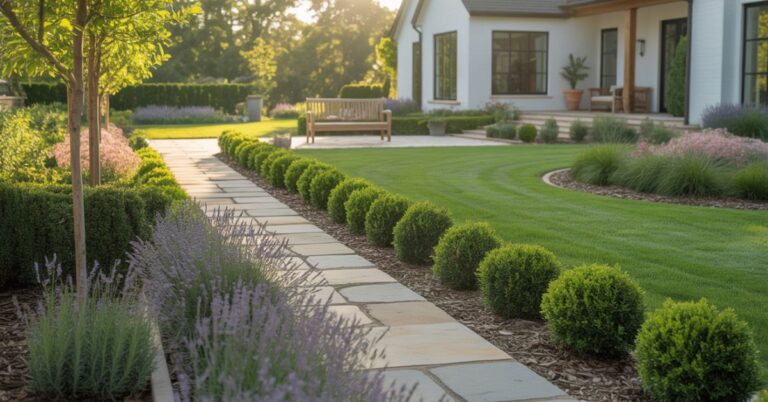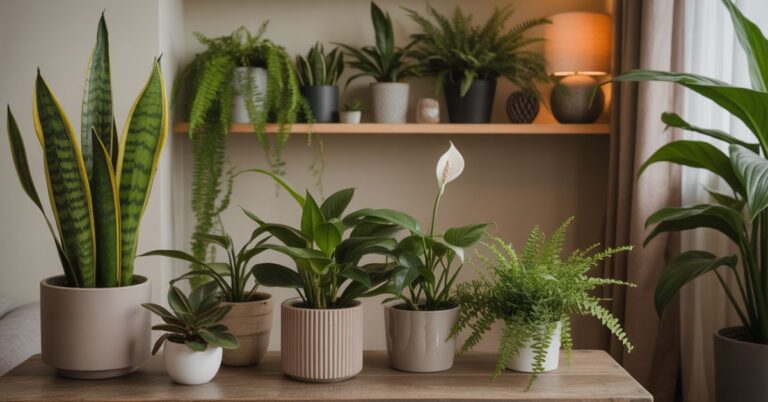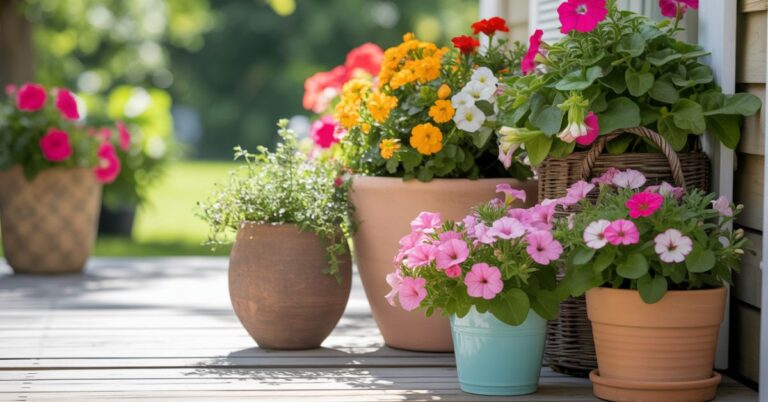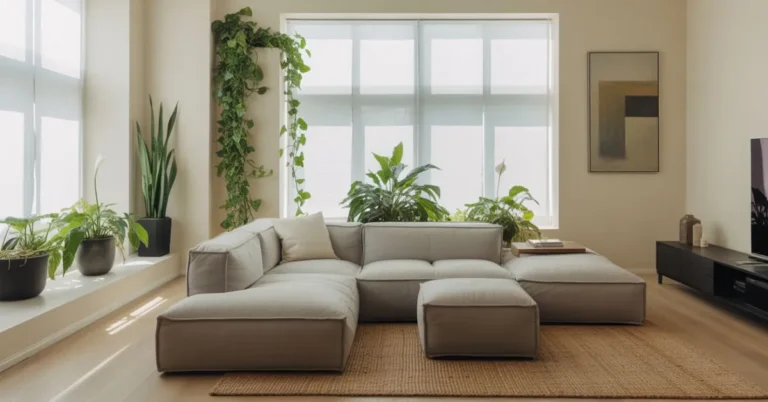50+ Terrace Garden Ideas for a Creative Rooftop Patio
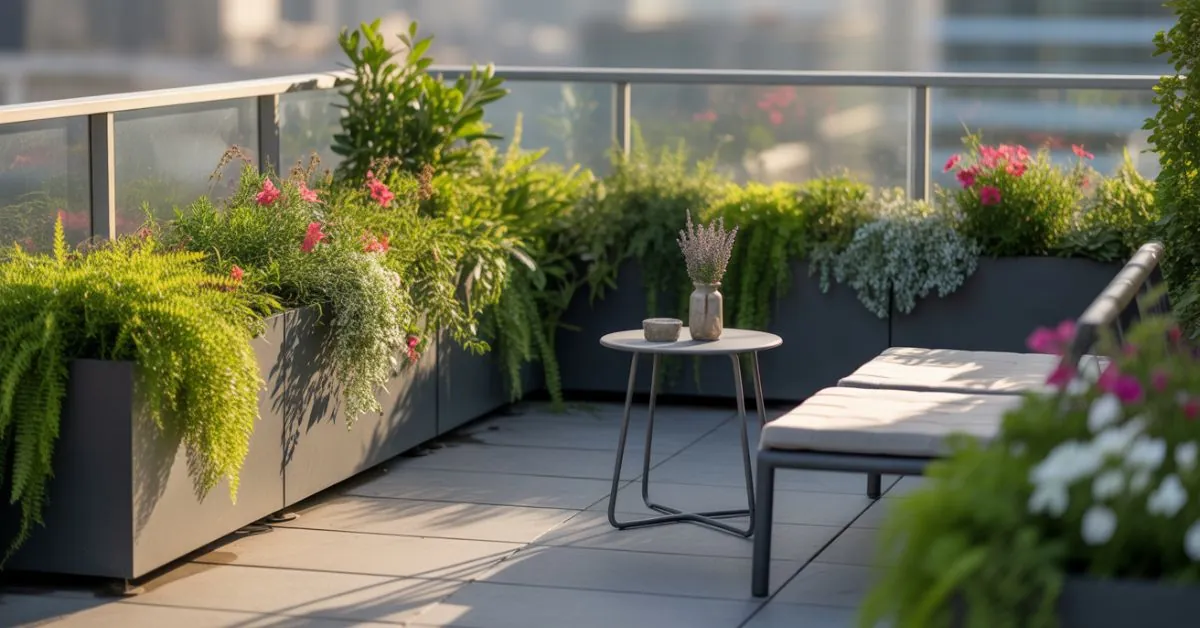
Staring at your empty rooftop or patio wondering how to transform that bland concrete space into a lush, productive garden oasis? You’re not alone. Urban dwellers everywhere struggle with limited growing space, watching their terraces collect dust while grocery prices soar and their connection to nature fades. The frustration builds when you see Instagram-worthy terrace garden ideas, rooftop patio spaces flourishing while yours remains a barren wasteland.
Here’s the truth: your rooftop or patio represents untapped potential for creating a self-sustaining garden paradise that produces fresh food, creates natural beauty, and provides a peaceful retreat from urban chaos. With the right terrace garden ideas, you can grow enough herbs and vegetables to significantly reduce grocery costs while creating an Instagram-worthy outdoor sanctuary. This comprehensive guide reveals over 50 proven rooftop patio gardening techniques that work in any space, climate, or budget transforming your unused outdoor area into a productive green paradise.
Essential Planning for Your Terrace Garden Success
Before diving into specific Terrace Garden Ideas for rooftop patio designs, understanding your space’s unique conditions determines the difference between thriving plants and disappointing failures. Terrace Garden Ideas must always account for the fact that rooftop and patio gardens face environmental challenges that ground-level gardens never encounter.
Sun exposure patterns change dramatically at elevation and in confined spaces. Most rooftops and patios receive 6-10 hours of direct sunlight, which seems ideal but can actually stress plants without proper management. Smart Terrace Garden Ideas include designing layouts that manage sun effectively. A well-lit rooftop Terrace Garden Idea can enhance the look of your space and create a warmer ambiance, especially in the evening and at night. Track sun movement across your space throughout the day, noting which areas receive morning versus afternoon sun. Morning sun provides gentler light for leafy vegetables, while afternoon sun suits tomatoes, peppers, and other heat-loving crops—showcasing how flexible Terrace Garden Ideas can be when adapted properly.
Wind exposure intensifies significantly on rooftops and elevated patios. Plants experience drying winds that can damage leaves, topple containers, and increase water needs by 50-100%. Practical Terrace Garden Ideas often include installing windbreaks using lattice screens, bamboo panels, or strategically placed vertical planters that serve dual purposes as plant holders and wind protection.
Weight distribution becomes critical for rooftop installations. Most residential roofs support 30-50 pounds per square foot, but this load must be distributed evenly. Successful Terrace Garden Ideas recommend avoiding concentrated heavy planters in single areas. Instead, spread weight across structural support points and consider lightweight growing media alternatives like coconut coir or perlite-based mixes instead of traditional heavy soil. These thoughtful Terrace Garden Ideas ensure safety while keeping your rooftop space lush and inviting.
Space-Maximizing Vertical Growing Systems
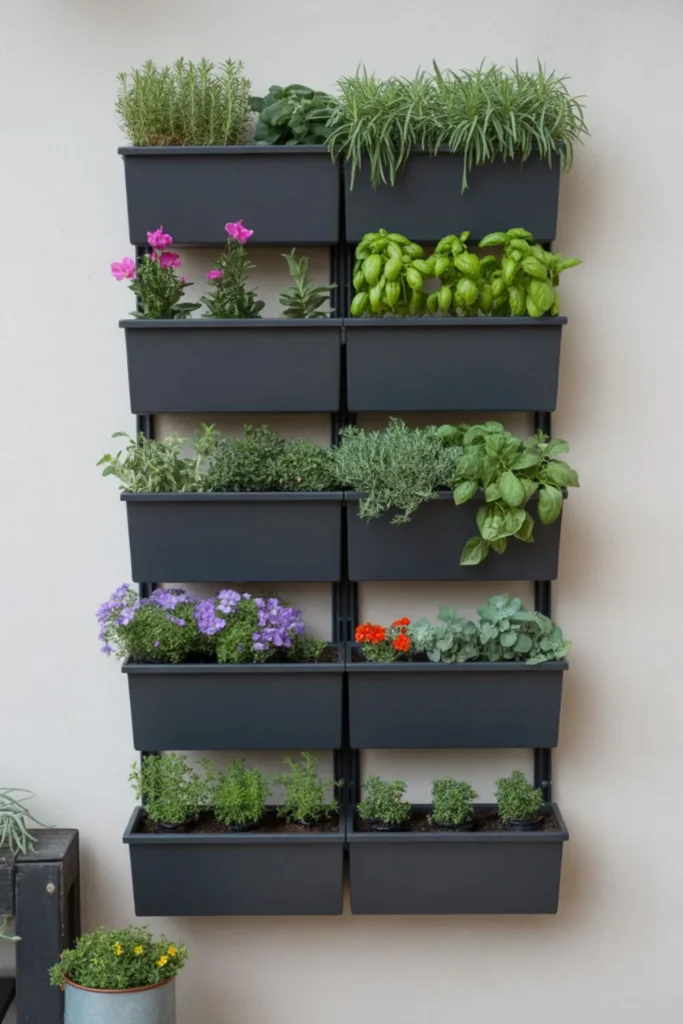
Vertical planters revolutionize small-space gardening and stand out as one of the most practical Terrace Garden Ideas for urban living. These innovative solutions multiply growing area without consuming precious floor space. Modern vertical systems allow gardening enthusiasts to grow 30–50 plants in the footprint typically occupied by only 6–8 traditional containers, making them essential for creative Terrace Garden Ideas.
A 6-Ft Raised Garden Bed – Vertical Garden with freestanding elevated planters is another excellent example of versatile Terrace Garden Ideas. With 4 container boxes, cascading water drainage, and space for vegetables, herbs, and flowers, these tiered systems provide maintenance-free gardening. The built-in water distribution ensures consistent moisture levels, showing why such solutions are at the top of functional Terrace Garden Ideas for patios, balconies, and rooftops.
Wall-mounted growing systems maximize vertical space along railings, privacy screens, and walls, becoming some of the most space-efficient Terrace Garden Ideas. Hanging grow pockets, wall-mounted planters, or even an old ladder transformed into a plant stand add charm and greenery. Fixing railing planters outside the terrace boundary creates extra growing space, proving how versatile Terrace Garden Ideas can transform apartments and condos with very limited floor space.
Tower garden systems like the Garden Tower 2 represent advanced and sustainable Terrace Garden Ideas. By integrating vermicomposting, 360-degree rotation, and nutrient recycling, this soil-based vertical garden can grow 50 organic herbs and vegetables in just 4 square feet. These innovative Terrace Garden Ideas not only produce restaurant-quality vegetables but also recycle kitchen scraps into nutrient-rich plant food.
Stackable modular planters add flexibility, adaptability, and creativity to modern Terrace Garden Ideas. Patented five-tier vertical planters, proudly made in East Tennessee, make gardening accessible and enjoyable. Tall and proud, this design supports vegetables, herbs, flowers, and even root crops, proving why modular setups are among the most adaptable Terrace Garden Ideas. These systems grow with your experience, expanding without replacing your entire setup—another reason modularity ranks high in practical Terrace Garden Ideas.
Read More About: 47 Stunning Roof Deck Ideas to Transform Your Rooftop Terrace
Best Plants for Rooftop Terrace Gardens
Plant selection makes or breaks terrace garden ideas rooftop patio projects. Success requires choosing varieties specifically adapted to container growing and elevated environments where conditions fluctuate more dramatically than ground-level gardens.
Herbs provide the highest return on investment for rooftop patio gardens. A few good examples of plants that are suited to terrace gardening are: Herbs; Basil, mint, rosemary Vegetables; Tomatoes, peppers Flowers; Marigolds, roses etc. Basil, oregano, thyme, and rosemary produce continuously when harvested regularly, providing fresh seasonings worth $20-30 monthly from a single container.
Mediterranean herbs like lavender, sage, and rosemary thrive in windy, sunny conditions typical of rooftops. These plants actually prefer the well-draining conditions that container growing provides. Their aromatic qualities also help repel common garden pests naturally.
Leafy greens adapt beautifully to terrace garden conditions with proper timing. Lettuce, spinach, arugula, and Asian greens prefer cooler weather and partial shade, making them perfect for spring and fall growing or shaded areas of your terrace. These crops mature quickly, often ready for harvest in 30-45 days.
Compact vegetable varieties maximize production in limited space. Cherry tomatoes, dwarf peppers, and bush beans produce impressive yields from single containers. Look for determinate tomato varieties that stay compact rather than sprawling indeterminate types that require extensive support systems.
Root vegetables work well in deeper containers. Carrots, radishes, and beets grow successfully in containers 8-12 inches deep. These crops also help break up soil as they grow, improving growing medium structure for subsequent plantings.
Container Selection and Soil Management
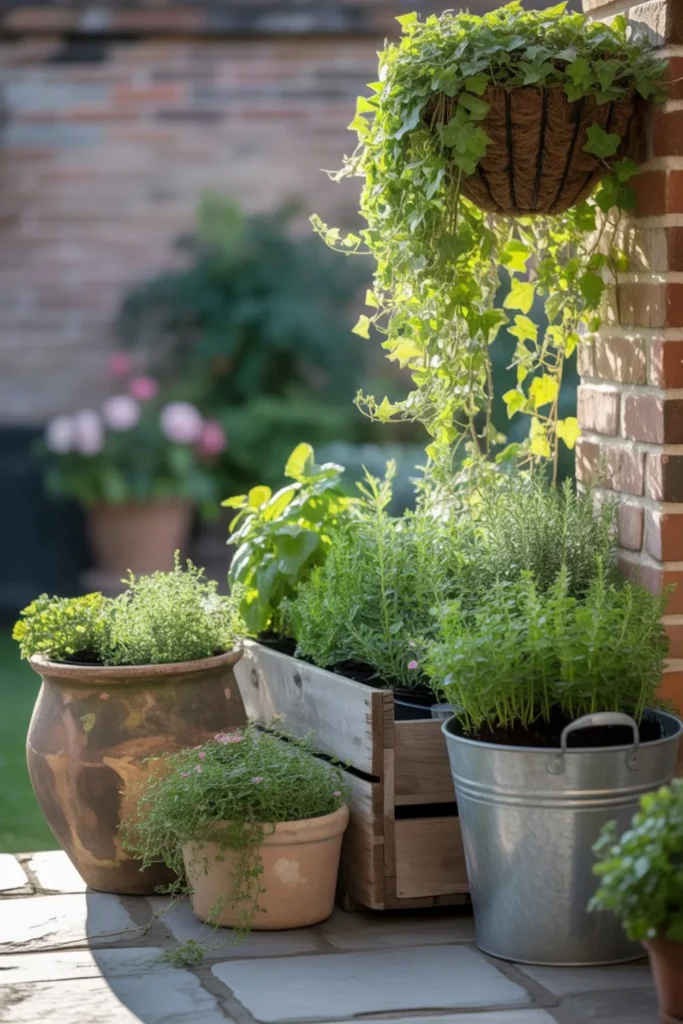
Container choice dramatically impacts plant health and your maintenance workload. The wrong containers lead to root-bound plants, rapid moisture loss, and frequent plant replacement costs that can exceed $500 annually for medium-sized terrace gardens.
Fabric grow bags provide superior root health compared to rigid containers. The breathable sides prevent root circling while providing excellent drainage and temperature moderation. Fabric containers also weigh significantly less than ceramic or concrete options, critical for rooftop patio weight management.
Self-watering containers reduce maintenance while improving plant performance. These systems maintain consistent soil moisture without over-watering, crucial for busy urban gardeners. Built-in water reservoirs provide 3-7 days of water supply, depending on plant size and weather conditions.
Container size directly correlates with plant productivity. Herbs need minimum 6-inch pots, leafy greens require 8-10 inches, and larger vegetables like tomatoes and peppers need 15-20 gallon containers for optimal production. Undersized containers limit root development, reducing yields by 40-60%.
Growing medium selection affects both plant health and container weight. Commercial potting mixes designed for containers provide better drainage and aeration than garden soil. Lightweight mixes incorporating perlite, vermiculite, and coconut coir reduce container weight by 30-40% while improving plant performance.
pH management becomes more critical in containers where growing medium cannot buffer naturally like ground soil. Most vegetables prefer slightly acidic to neutral pH (6.0-7.0). Test growing medium pH monthly and adjust using lime to raise pH or sulfur to lower pH as needed.
How to Design Your Terrace Garden Layout
Effective Terrace Garden Ideas for rooftop patio layouts balance aesthetics, functionality, and plant health requirements. Poor layout design often results in uneven plant growth, difficult maintenance access, and disappointing harvests despite significant time and money investments. Well-planned Terrace Garden Ideas ensure that your space thrives both visually and productively.
One of the most strategic Terrace Garden Ideas is creating microclimates by grouping plants with similar needs. Position shade-loving leafy greens behind taller plants or structures that provide afternoon shade, while placing sun-loving herbs and vegetables in the brightest locations. These Terrace Garden Ideas not only reduce water needs but also enhance plant health and overall yield.
Another important aspect of effective Terrace Garden Ideas is establishing clear pathways for maintenance. Leave 18–24 inches between container groupings to allow comfortable movement for watering, harvesting, and plant care. Without this, narrow pathways can cause plant neglect and increased pest problems—issues easily avoided with thoughtful Terrace Garden Ideas.
Height variation adds both beauty and functionality to Terrace Garden Ideas. Looking for low-cost and simple rooftop design concepts? Try a patchwork garden. It’s a straightforward yet impressive Terrace Garden Idea that uses plant stands, inverted containers, or purpose-built risers to showcase different plants while improving air circulation.
Water management is central to successful Terrace Garden Ideas. Place thirsty plants closer to water sources while positioning drought-tolerant ones farther away. Installing drip irrigation lines or soaker hoses is one of the smartest Terrace Garden Ideas to reduce labor while improving long-term plant health.
Finally, seasonal adaptability defines sustainable Terrace Garden Ideas. Design removable elements and mobile container systems that can be reconfigured throughout the year. These Terrace Garden Ideas make it possible to move cold-sensitive plants into protected areas during winter months while keeping your garden productive year-round.
Irrigation Solutions for Container Gardens
Water management separates successful terrace garden ideas rooftop patio projects from disappointing failures. Container plants require more frequent watering than ground plantings, with some needing daily attention during hot weather, but proper irrigation systems automate this task while reducing water waste.
Drip irrigation systems provide precise water delivery directly to root zones. These systems reduce water usage by 30-50% compared to overhead watering while eliminating leaf diseases caused by wet foliage. Timer-controlled systems maintain consistent moisture levels even during vacations or busy periods.
Self-watering container systems maintain optimal soil moisture automatically. These containers include built-in reservoirs that supply water to plants through capillary action. Plants draw water as needed, preventing both drought stress and overwatering problems common with manual watering schedules.
Mulching reduces water evaporation by up to 70% while regulating soil temperature. Organic mulches like shredded bark or straw work well, but inorganic options like landscape fabric or gravel require no replacement and won’t blow away in windy conditions typical of rooftops.
Rainwater collection systems provide free water while reducing runoff. Simple systems collecting roof runoff into storage barrels provide chlorine-free water that plants prefer. Larger systems can supply most watering needs for medium-sized terrace gardens in areas with adequate rainfall.
Watering timing optimization reduces evaporation loss and disease problems. Water early morning (6-8 AM) to allow foliage to dry before evening while providing moisture for the day’s heat. Avoid evening watering that leaves plants wet overnight, encouraging fungal diseases.
Seasonal Planning and Crop Rotation
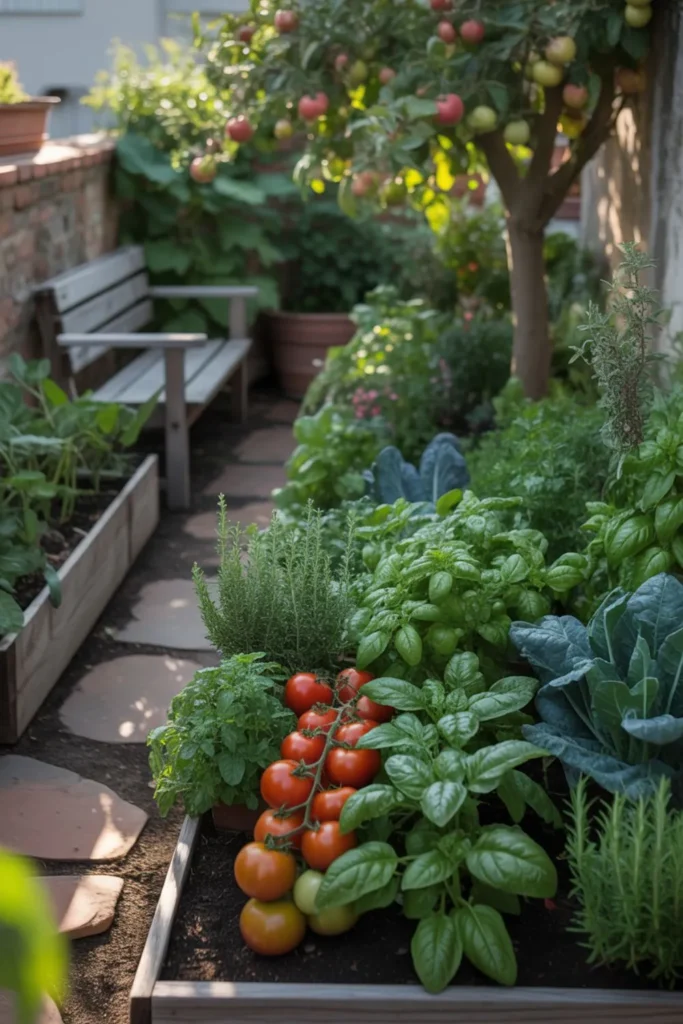
Successful rooftop patio gardens require strategic seasonal planning that maximizes productivity year-round. Understanding planting schedules and crop rotation principles doubles harvest yields while maintaining soil health in containers.
Spring planning focuses on cool-season crops that thrive in mild temperatures. Start lettuce, spinach, peas, and radishes 2-4 weeks before your last frost date. These crops prefer temperatures between 50-70°F and can handle light frosts, extending the growing season significantly.
Summer transitions require heat-tolerant varieties and increased shade provision. Replace cool-season crops with basil, tomatoes, peppers, and eggplants that thrive in 70-85°F temperatures. Install shade cloth providing 30-50% shade during peak summer to prevent heat stress.
Fall gardening extends fresh vegetable production through winter in many climates. Plant second crops of lettuce, spinach, and other greens 60-90 days before first frost. Many vegetables actually taste sweeter after light frost exposure, providing better flavors than spring crops.
Winter protection allows year-round growing in moderate climates. Cold frames, mini-greenhouses, or fabric row covers protect plants from freezing while extending growing seasons. Even simple plastic sheeting can provide 5-10 degrees of frost protection.
Crop rotation prevents disease buildup and maintains soil fertility in containers. Avoid planting the same plant families in containers consecutively. Follow heavy feeders like tomatoes with light feeders like herbs, then soil-building legumes like beans or peas to restore nutrients naturally.
What Are the Costs of Starting a Terrace Garden?
Understanding terrace garden ideas rooftop patio costs helps establish realistic budgets and prioritize investments that provide the best returns. Initial setup costs vary dramatically based on size, automation level, and container quality, but the investment typically pays for itself within 12-18 months through grocery savings.
Basic container garden setups start around $200-500 for 20-30 containers with basic growing supplies. This budget includes fabric grow bags, potting soil, seeds, and basic hand tools. These simple systems can produce $100-200 worth of fresh vegetables monthly during peak growing seasons.
Mid-range installations cost $500-1,500 and include self-watering containers, drip irrigation systems, and premium growing media. Vertical gardening planters are space-saving and make it easy to grow vegetables, herbs, and flowers abundantly, even on balconies, patios, decks, or concrete. These systems reduce maintenance time while increasing yields significantly.
Premium automated systems range from $1,500-5,000 for complete installations with vertical growing towers, automated irrigation, and season extension equipment. These systems produce restaurant-quality vegetables year-round while requiring minimal daily maintenance.
Ongoing costs include seeds, growing medium replacement, and nutrients. Budget $50-150 monthly for supplies, depending on garden size and intensity. However, vegetable production typically exceeds supply costs by 300-500%, providing significant grocery savings.
Return on investment calculations show impressive results for dedicated gardeners. A well-managed 100 square foot terrace garden can produce $2,000-4,000 worth of organic vegetables annually while providing therapeutic benefits and improved nutrition impossible to quantify financially.
Privacy and Aesthetic Design Elements
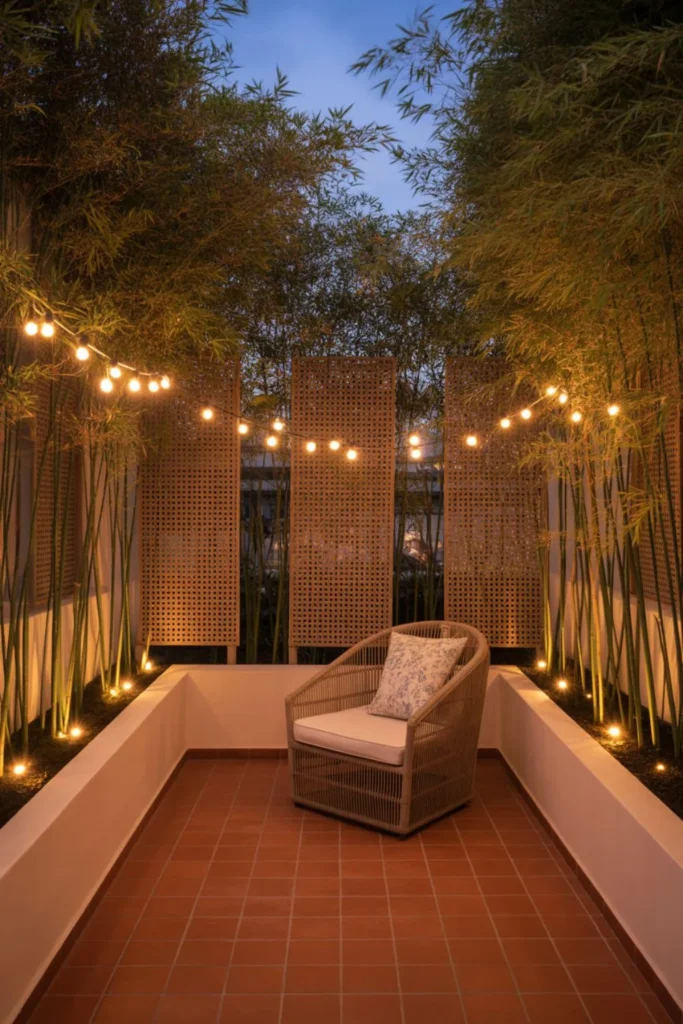
Design ideas such as using trees to create foliage, or hedges for privacy screens ensures a beautiful terrace garden from the balcony floor upwards. Integrating privacy solutions with productive growing creates beautiful, functional spaces that serve multiple purposes while maximizing limited square footage.
Living privacy screens using edible plants provide dual benefits. Trellised climbing beans, peas, or cucumbers create natural screens while producing food. These vertical elements also add visual interest and seasonal changes that static privacy screens cannot provide.
Ornamental edible plants combine beauty with productivity. Purple basil, rainbow chard, and ornamental kale provide stunning colors while supplying fresh ingredients. These plants often outperform purely decorative plants in visual impact while providing practical benefits.
Lighting design extends terrace garden usability into evening hours while showcasing plant beauty. Solar-powered LED systems provide eco-friendly illumination without electrical installation costs. Uplighting beneath large plants creates dramatic silhouettes against walls or railings.
Seasonal decorations maintain interest during dormant periods. Decorative containers, garden art, and seasonal plantings ensure your rooftop patio remains attractive even when productive plants are dormant. These elements also provide focal points that tie the garden design together visually.
Color coordination creates cohesive designs that feel intentional rather than random. Choose container colors that complement your building’s exterior and select plants with complementary foliage and flower colors. This planning creates magazine-worthy results that increase property value.
Read More About: 47 Stunning Roof Deck Ideas to Transform Your Rooftop Terrace
Pest Management in Container Gardens
Container gardens face unique pest challenges requiring specific management strategies. Elevated locations reduce some ground-dwelling pests but create new challenges with flying insects and beneficial habitat limitations that require proactive management approaches.
Beneficial insects struggle to establish in elevated container gardens without proper habitat provision. Include flowering herbs like oregano, thyme, and cilantro that provide nectar sources for predatory insects. Small dishes of water create drinking sources that encourage beneficial insect populations.
Companion planting deters pests naturally without chemicals. Marigolds repel aphids and whiteflies while attracting beneficial insects. Strong-scented herbs like basil, rosemary, and mint confuse pest insects while providing culinary value. These aromatic plants also enhance the sensory experience of your terrace garden.
Physical barriers prevent many pest problems before they start. Floating row covers protect young plants from flying pests while allowing light and air circulation. Copper tape around container edges deters slugs and snails that can climb to elevated gardens.
Organic pest control methods work effectively in container systems. Neem oil controls aphids, spider mites, and other soft-bodied insects without harming beneficial species. Bacillus thuringiensis controls caterpillar pests organically while remaining safe for humans and pets.
Regular monitoring prevents small problems from becoming major infestations. Check plants weekly for pest signs including discolored leaves, small holes, or visible insects. Early intervention using gentle methods prevents the need for stronger treatments that can disrupt garden ecosystems.
Conclusion
Creating a thriving terrace garden ideas rooftop patio transforms unused urban space into a productive sanctuary that provides fresh food, natural beauty, and therapeutic benefits impossible to achieve any other way. The key lies in understanding your space’s unique conditions and selecting systems that work with rather than against elevated growing challenges.
Your rooftop or patio represents unlimited potential for sustainable urban living that reduces grocery costs while improving your connection to food sources and natural cycles. Whether you envision a simple herb garden providing fresh seasonings or an extensive vertical system producing restaurant-quality vegetables year-round, proper planning and quality systems deliver results that exceed expectations. The investment in automated irrigation and quality containers pays dividends through years of reduced maintenance and improved harvests, making your terrace garden one of the most rewarding improvements you can make to urban living.
Frequently Asked Questions
What vegetables grow best in rooftop terrace gardens?
Compact, heat-tolerant vegetables perform best in terrace garden conditions. Cherry tomatoes, bush peppers, lettuce, herbs, and root vegetables like carrots and radishes thrive in containers. Focus on determinate varieties that stay compact rather than sprawling types requiring extensive support. Mediterranean herbs like basil, oregano, and thyme handle wind and sun exposure exceptionally well while providing continuous harvests throughout the growing season.
How much space do I need for a productive terrace garden?
A productive rooftop patio garden can start in as little as 25-50 square feet using vertical planters and intensive growing methods. Vertical systems allow growing 30-50 plants in the footprint of 6-8 traditional containers. Even apartment balconies measuring 6×8 feet can produce significant quantities of herbs and vegetables using wall-mounted planters and tiered container systems.
What’s the best irrigation system for container gardens?
Drip irrigation systems provide the most efficient water delivery for terrace garden containers, reducing water usage by 30-50% while maintaining consistent moisture levels. Self-watering containers work excellently for smaller gardens or renters who cannot install permanent irrigation. Timer-controlled systems ensure plants receive water even during vacations, preventing costly plant losses from drought stress.
How do I protect plants from strong rooftop winds?
Wind protection requires multi-layered approaches including windbreak screens, strategic plant placement, and proper container securing. Install lattice screens or bamboo panels to reduce wind speed by 50-70%. Group containers together to create microclimates and use vertical planters as living windbreaks. Secure all containers with weights or tie-downs to prevent toppling during storms.
Can I grow vegetables year-round on my terrace?
Year-round growth depends on your climate zone and protection methods. Cool-season crops like lettuce, spinach, and herbs grow through winter in zones 7-10 with minimal protection. Cold frames, mini-greenhouses, or fabric row covers extend growing seasons significantly in colder climates. Even simple plastic sheeting provides 5-10 degrees of frost protection for winter vegetable production.
Ready to start your terrace garden transformation?
Begin with a simple herb collection in self-watering containers, then expand using vertical planters as you gain confidence and experience in rooftop patio gardening success.


